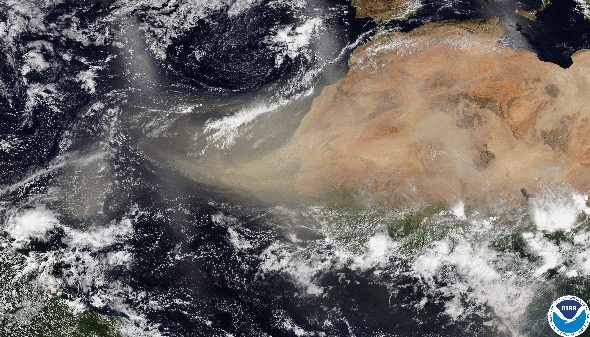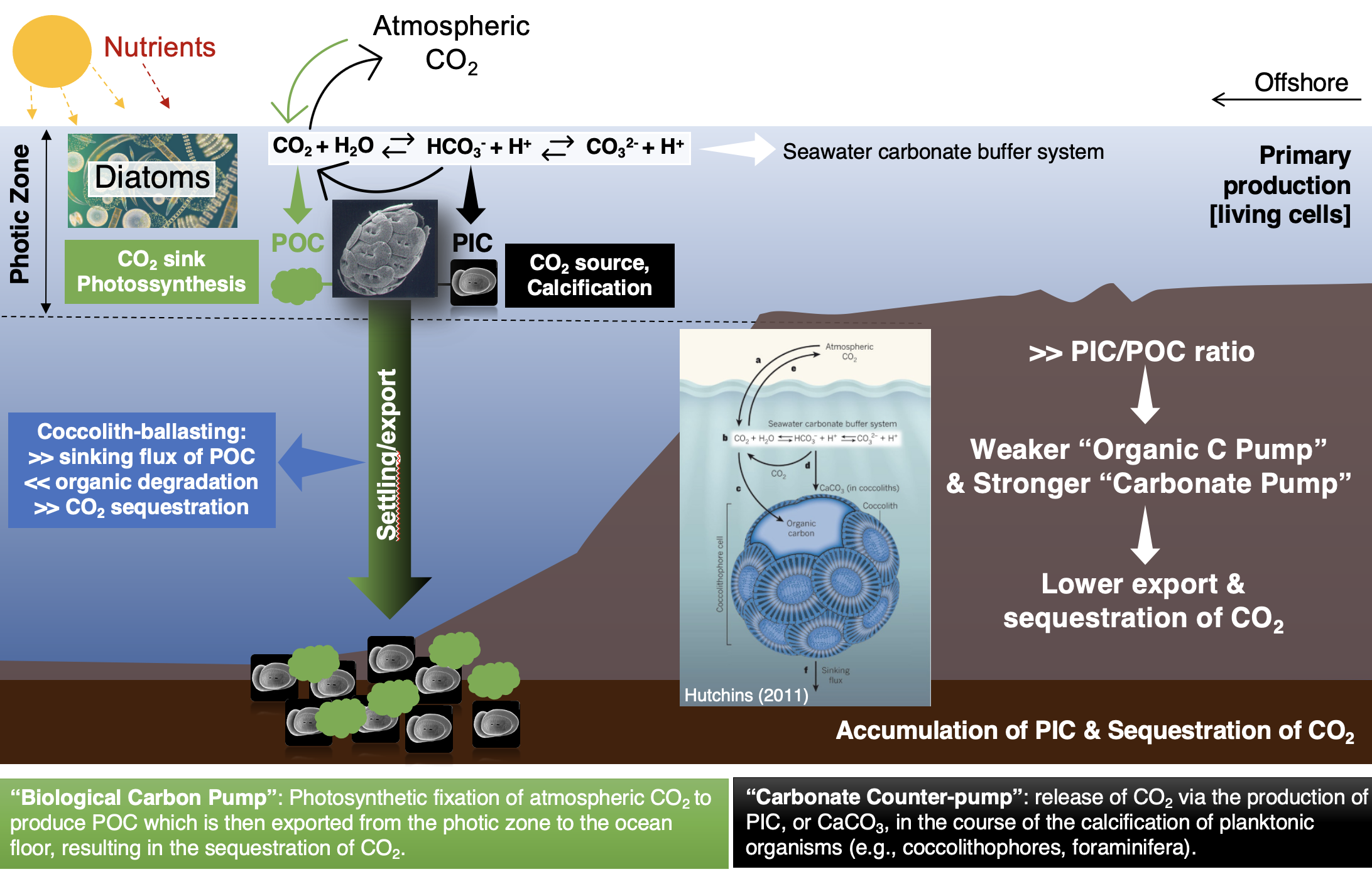WELCOME TO THE CHASE BLOG!
Welcome to our blog! Here we will update you on the evolution of our research and share new articles and events in the course of the project. We created this space to shorten the distance between scientists and the general public, and promote an on-line discussion over these and other related topics. So feel free to participate, either by ask questions and/or by providing feedback to our posts!
As part of the Horizon EU OceanICU project, CHASE researcher Catarina Guerreiro participated in an ambitious sampling program aboard the RV Sarmiento de Gamboa. From collecting seawater and plankton to running dust fertilization experiments, the multidisciplinary effort brought together scientists and students to better understand how airborne dust and plankton dynamics shape carbon export processes in the Atlantic Ocean.
During her presentation, Catarina shared a synthesis of all the work that she led as an Early Career researcher in the course of EU- and FCT-funded projects at University of Bremen, MARE-Ulisboa and IDL, exploring marine biogeochemical responses to Saharan dust deposition in the Atlantic, in close collaboration with NIOZ, MARUM, PML, EAU, ICTA and CSIC-ICM.
Federico’s ERASMUS+ traineeship was a collaborative effort between the University of Milano-Bicocca (Italy) and Ciências-ULisboa (Portugal), based on data collected during the Atlantic Meridional Transect.
His research, based on multidisciplinary data from AMT28, will enhance our understanding of calcifying phytoplankton in the less-studied South Atlantic, crucial to improve the use of coccoliths as paleoecological and paleoceanographic indicators of ocean primary productivity and biogeochemical processes.
Findings from this study enhance our understanding of the complex interactions between environmental changes and phytoplankton in the Western Antarctic Peninsula, a climatically sensitive region of the Southern Ocean, and raise important questions about the potential global consequences for carbon sequestration and Antarctic food webs in the future.
After months of preparations, the OSM2024 was finally held last February in New Orleans, gathering up to 6000 scientists, stakeholders and representatives of the multidisciplinary ocean science communities from all over the world.
In this study, we have determined the coccolith‐Sr/Ca from a one‐year time‐series sediment trap record in the western tropical North Atlantic to distinguish the biogeochemical effects of Saharan dust with respect to fertilisation and ballasting, and to gain a broader perspective on the coccolith calcite Sr/Ca in relation to the drivers of coccolith export production.
This study led by the University of Miami explores the biogeochemical impacts of mineral dust deposition on marine microbial phosphate uptake during the “Godzilla” dust storm of June 2020, when unusually high fluxes of dust traveled across the Atlantic from the Sahara Desert, reaching the Americas.
Our participation in the SOLAS Scoping Workshop in Xiamen (China) as well as the most recent expedition that we did in the tropical Atlantic, earlier this year, were mentioned in a recent article published at national newspaper Público, featuring our recent study on the effects of Saharan dust in the North Atlantic.
CHASE members will be hosting Session AI009 on “The Biogeochemistry of Air-Sea Exchange Processes”, in the framework of the general theme “Air-Sea Interactions”. Let’s all meet at the amazing New Orleans to share our latest findings on air-sea interactions! Abstract submission deadline: 13 September 2023.
This special issue, in which CHASE PI Catarina V. Guerreiro (MARE/ARNET-FCUL) has been invited as guest editor, is an outcome of the Open Science Conference on EBUS: Past, Present and Future & Second International Conference on the Humboldt Current System. The deadline for submissions is 31 January 2024!
The Okada-McIntyre Fellowship is intended for students actively seeking advanced degrees researching any aspect of modern/recent calcareous nannoplankton ecological dynamics, including seawater, sediment trap and seafloor sediment records, as well as from laboratory culture experiments dealing with any morphological, genetic, biogeochemical, and/or ecological aspects of coccolithophore species.
The main goal of her traineeship was to learn the taxonomy of extant coccolithophores living along a meridional transect crossing temperate and subtropical waters in the South Atlantic Ocean, collected in situ during the Atlantic Meridional Transect (AMT28).
Our paper investigates the role (and interplay) of large-scale oceanographic and atmospheric processes across the North Atlantic Ocean on the meridional and in-depth distribution of ecologically distinct coccolithophore species, a group of marine phytoplankton that crucially interacts with the marine carbon cycle.
In this Research Topic, we invite manuscripts that will improve existing understanding of drivers and biogeochemical impacts of atmospheric aerosols from natural (mineral dust originating from deserts, volcanic ashes, and pyrogenic aerosols from wildfires) and anthropogenic sources on marine ecosystems, both in the past, present, and future.
The Dusty Team - including researchers from MARE, NIOZ and MARUM-Bremen - is finally preparing everything to get on board of RV Pelagia, to be part of an expedition for investigating the biogeochemical effects of Saharan dust deposition in the tropical Atlantic.
Catarina V. Guerreiro and Jan-Berend Stuut present CHASE-related research on dust and biogenic particle flux variability across the tropical North Atlantic, including a region known to be influenced by the Canary Current Eastern Boundary Upwelling System (EBUS).
The teams of CHASE/PRIMUS and SINES projects join forces to study (paleo)ecological processes in the highly productive pelagic ecosystem across the coastal upwelling waters and the open ocean off Iberia. Our plan is to contribute to understand the nature of modern ecological changes in relation to the pre-industrial conditions.
For three very intense days, we had the extraordinary opportunity to meet with ministers, researchers, and stakeholders of all countries from both sides of the Atlantic Ocean, which were reunited at the National Academy of Sciences for the signing of the All-Atlantic Ocean Research & Innovation Alliance Declaration.
Just a quick reminder of our ongoing Atmosphere MDPI special issue, launched to attract authors aimed at contributing to improve existing understanding of the biogeochemical impacts of atmospheric nutrients from natural and/or anthropogenic sources on marine and terrestrial ecosystems. Deadline: 30th November 2022!
Once again, our dusty-team attended EGU (Vienna, Austria, 23–27 May 2022), to present some of our latest findings regarding the effects of Saharan dust deposition in the marine environment.
CHASE members Catarina V. Guerreiro and Jan-Berend Stuut will be hosting Session # 7 on “Understanding the driving factors of marine productivity in EBUS”, as part of the Thematic Axis 1 on “Ocean physics and associated biogeochemical processes in relation to climate variability and climate change”.
A large Saharan dust cloud is currently moving out of Africa and into the open Atlantic Ocean, transported by the Trade Winds towards the Antilles and South America, and marking an early start to the Saharan dust storm season.
In this Special Issue, we invite authors to submit manuscripts that will contribute to improve existing understanding of the ecological and biogeochemical impacts of atmospheric nutrients from natural and/or anthropogenic sources on marine and terrestrial ecosystems, both in the past, present and future. Deadline for manuscript submissions is the 30th November 2022!
Since late September 2021, we are working as team members of of an exciting new project lead by the Plymouth Marine Laboratory (PML) and funded by the European Space Agency (ESA): PRIMary productivity in Upwelling Systems (PRIMUS). At PRIMUS, we will be leading Science Case 8, which aims at comparing one year of sediment trap flux data produced by mineralising phytoplankton (including coccolithophores) in the Canary Current system (off Mauritania) with PRMUS NPP data, using both standard and Lagrangian frameworks.
Over the past month, our NIOZ dusty-colleagues were chasing Saharan dust in the tropical NE Atlantic off Mauritania (NW Africa), in the highly productive Canary Current EBUS. From collecting lots of dust brought by the NE Trades, to seeing volcanic eruptions from Cumbre Vieja volcano, and ending with fabulously improvised snacks made of gooseneck barnacles which had overgrown around the buoys, their adventure was a success!
Over the past week, CHASE attended the Iron at the Air-Sea Interaction Workshop (26-30 July 2021, Asheville, NC, USA and on-line), organized by GEOTRACES to discuss the factors controlling aerosol-born bioaccessible labile Fe to move across the ocean-atmosphere interface and to become bioavailable for biological uptake in the ocean.
And yet another contribution by our dusty-team, finally published in L&O! This time, we explore the role of coccolithophores (calcifying phytoplankton) in the export production of carbonate between NW Africa and the Caribbean, and of Saharan dust deposition in potentially modulating their impact on the “biological carbon pump” across the tropical North Atlantic.
Our dusty-team will be presenting new findings from the tropical North Atlantic this Friday, 30th April, during virtual EGU 2021! Jan-Berend Stuut (NIOZ) will show a comparison between fluxes and particle-size distribution data from dust collected from the atmosphere at the surface of the tropical North Atlantic and dust settling through the ocean underneath and intercepted by the submarine sediment traps at 1200 m depth. Enjoy!
Did you know that more than 180 million tons of dust are lifted from the Sahara Desert and blown out off North Africa by strong seasonal winds every year? Take a look at the dramatic display of airborne dust particles that in February 18, 2021, by the NOAA-20 spacecraft!






























